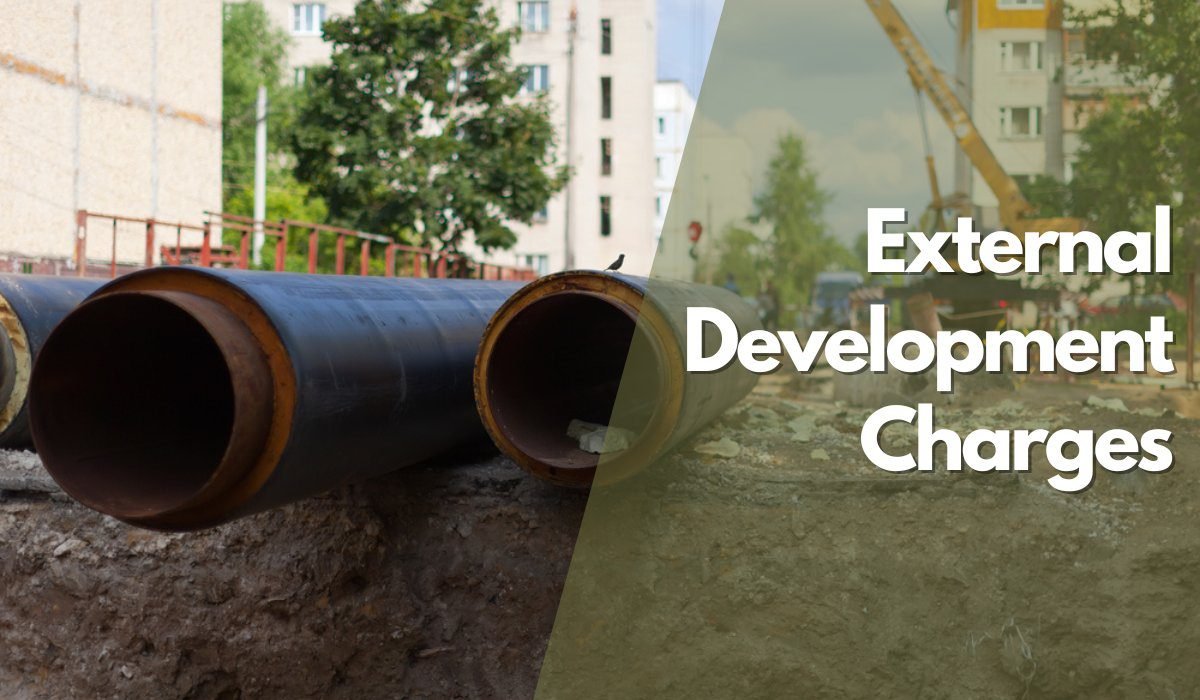While developing any project, a fee should be paid to the municipal corporation. This fee is known as the external development charges. In this guide, let us learn more about external development charges, a major revenue source for the municipal corporation.
What is external development charge?
According to the Real Estate Regulation and Development Act (RERA) 2016, developers have to ensure that there are public facilities available in and around housing projects. For this, a developer has to pay external development charges (EDC) to the municipal body. The EDC is one of the sources for revenue of the municipal body. This fee depends on the configuration of a property and its per sqft rate and is billed to the homebuyer.
What is the need for external development charges?
A developer has to pay the external development charges when a new project starts, or any existing project is planned to be modified.
The local authority uses this external development charges fund to construct infrastructure projects, around the housing project. This includes public amenities, such as water supply, road, sewage, drainage system, etc. The aim is to provide a comfortable life for the residents of the area.
Are external development charges the same as property tax?
No, the external development charges are not the same as property tax. These are used to develop infrastructure and maintain it.
Impact of external development charges on property
- Although, the external development charges on properties are paid by the developer, these charges are passed on to the property buyers. This results in increased cost of property.
- This impacts the demand of the real estate projects.
- EDC differs from area-to-area as it is also based on the configuration and cost per sqft of the property.
External development charges: Components included
- Road development charges: These charges will be used to develop roads in front of the project. This will include construction of new roads, road widening projects, etc.
- Environmental charges: These will be used for conservation, such as pollution control, conservation of biodiversity, afforestation, etc.
- Society development charges: These charges will include development of educational institutions, banks, shopping centers, healthcare facilities, community centers, etc.
- Park development charges: These will include development and maintenance of open spaces and green areas, such as landscaping, public parks, etc.
- Water supply and sewage charges: These are used to construct new water supply lines, water treatment plants, etc. The EDC is also used to improve the network of drainage so that issues like water logging, etc., do not exist.
What happens if you do not pay external development charges?
- Non-payment of EDC will result in legal penalties.
- The authority will not handover occupation certificate of the project until the EDC is paid.
- This will result in project delay.
- This will also impact the reputation of the developer and the project.
How to calculate the external development charges?
EDC/sq ft is equal to ratio of applicable EDC rate/ acre and the total permissible area.
If EDC rate/ acre is 20,00,000 and the total permissible area is 2,02,366,
Thus, EDC/sqft = 20,00,000/2,02,366 = Rs 9.88/ sqft.
Difference between external development charges and internal development charges
- While external development charges are for public projects (outside the project), the internal development charges are for the facilities people will use.
- The EDC is used for development of external infrastructure, such as roads, water supply, drainage, etc. The internal development charges (IDC) are used for facilities inside the project, such as roads inside complex, electricity, and sewage facilities.
- While EDC is an extra expense that a builder has to pay (which is passed to the homebuyer), IDC is the expense included in the project development cost.
FAQs
What is the approximate amount of EDC that buyers have to pay?
Buyers have to pay around 10% of the property value as EDC.
Do you pay GST with EDC?
You do not have to pay GST with EDC.
Is EDC the same for all units in a project?
No, external development charges are calculated based on the area of the unit.
How do you calculate EDC?
EDC/sq ft is equal to ratio of applicable EDC/ acre and the total permissible area.
Is EDC different for various properties?
Yes, EDC is different for commercial, residential, and industrial properties.
| Got any questions or point of view on our article? We would love to hear from you. Write to our Editor-in-Chief Jhumur Ghosh at [email protected] |

With 16+ years of experience in various sectors, of which more than ten years in real estate, Anuradha Ramamirtham excels in tracking property trends and simplifying housing-related topics such as Rera, housing lottery, etc. Her diverse background includes roles at Times Property, Tech Target India, Indiantelevision.com and ITNation. Anuradha holds a PG Diploma degree in Journalism from KC College and has done BSc (IT) from SIES. In her leisure time, she enjoys singing and travelling.
Email: [email protected]











